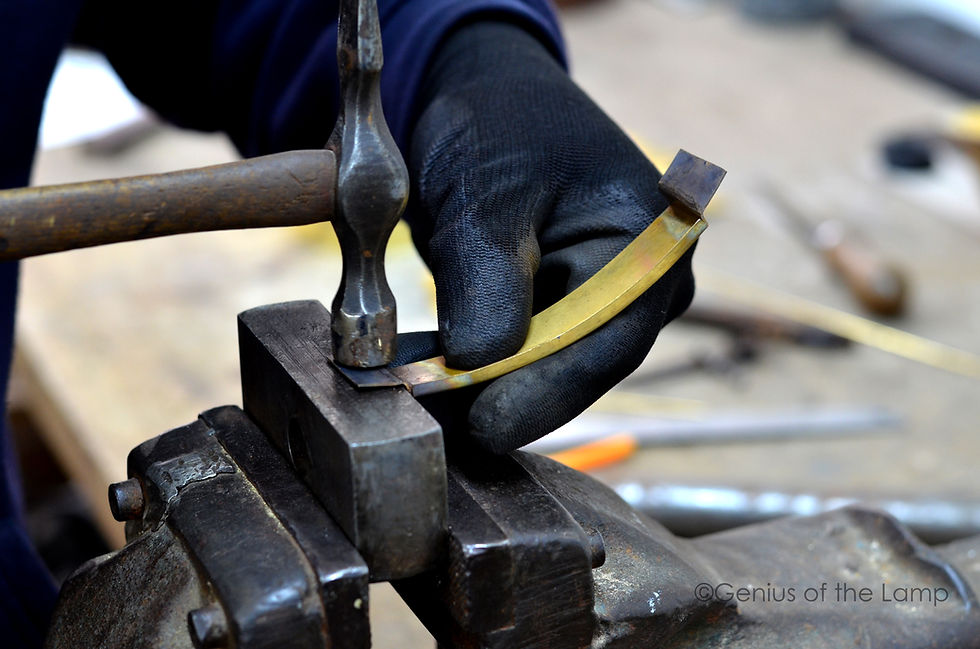Title: Restoring Brilliance – A Signature Nickel Finish for a Vintage Radiator Shell
- Joe Vella
- Aug 3
- 3 min read
Updated: Aug 7
At Concours Plating, we believe that restoration is more than just a return to form — it's an elevation of function, detail, and artistry. Recently, we had the pleasure of restoring a classic radiator shell to its former glory, using our signature mirror-bright nickel plating process.
This wasn’t just any radiator shell. It belonged to a vintage car whose every detail demands respect and authenticity. Rather than opting for chrome, our client chose a nickel finish — a decision that not only honours the vehicle’s original styling but also showcases the craftsmanship of traditional metal finishing.
The Process
The full restoration followed a precise and time-tested sequence:
Initial Assessment – Evaluating structural condition, alignment, and surface wear.
Stripping – Removing old finishes and contaminants with chemical and mechanical methods.
Secondary Assessment – With bare metal exposed, identifying cracks, warping, or deep imperfections.
Restoration – A painstaking process using traditional silversmith’s techniques — including detailed hammering, planishing, filing, and silver soldering — to reshape and rebuild the shell while preserving its original form.
Sanding and Polishing – Preparing the surface through progressive abrasives to ensure uniform smoothness.
Copper Plating – Applying a high-quality copper layer, typically around 100 microns thick, to act as a foundation and filler for the final finish. to act as a foundation and filler for the final finish.
Sanding and Polishing (Again) – Leveling and refining the copper surface to mirror standards.
Nickel Plating – Multiple layers of high-purity nickel are applied under controlled conditions, typically to a thickness of around 80 microns. This significantly exceeds the minimum 35 µm requirement outlined in BS EN ISO 1456:2009 (Fe/Ni35b), providing enhanced durability, corrosion resistance, and visual depth for concours-level restorations.
Final Polishing – Enhancing reflectivity and finish depth.
Assembly – Reuniting the restored shell with its fittings or structure.
Each step builds upon the last, ensuring both functional integrity and aesthetic excellence.
Why Nickel?
While chrome may be more commonly associated with classic car restoration, nickel has a unique aesthetic that’s often preferred for pre-war and vintage vehicles. Its slightly softer, warmer tone reflects light differently, adding depth and character without the harsh reflectivity of chrome.
Nickel is also a more historically accurate option. For many early vehicles, particularly those built before chrome plating became widespread in the 1920s and 30s, nickel was not a preference — it was the only plating option available. Choosing nickel, therefore, is not just about appearance, but about preserving period correctness and historical integrity.
Signature Results
The finished shell gleamed with subtle brilliance — not overly flashy, but undeniably refined. Every curve and contour was accentuated by the plating, turning a functional part into a centrepiece. Our client was thrilled with the results, and we were proud to sign off another job under the Concours Plating banner.
See More, Commission Your Own
If you're restoring a vehicle, working on a concours-level project, or simply want to explore the possibilities of metal finishing, we invite you to see more at www.concoursplating.co.uk.
We’re based in Birmingham and serve clients across the UK and beyond — from classic car collectors to high-end restoration specialists. Whether it’s nickel, chrome, or custom surface finishing, our team is ready to bring brilliance back to metal.
Get a quote | All work done in-house | concoursplating.co.uk
Contact us today:
+44 121 212 0155




Comments